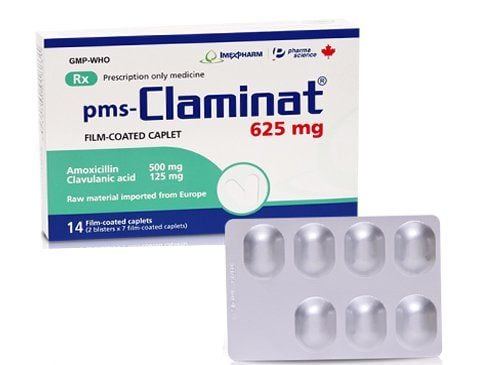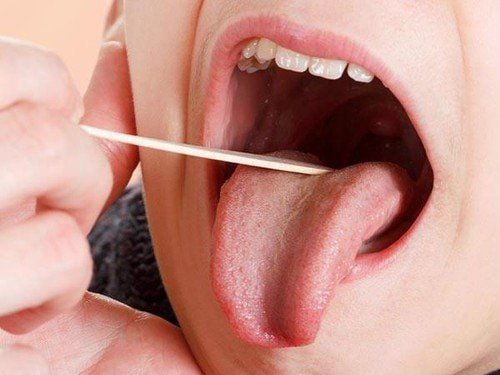This is an automatically translated article.
The article was professionally consulted by MSc Dang Thi Thuy Trang - Ear, Nose and Throat specialist, Vinmec Central Park International General Hospital.Tonsillitis is a swollen, red, painful lump of tonsils in the pharynx and back of the throat. This is one of the common inflammatory diseases of the upper respiratory tract, especially in school-age children.
1. What is recurrent tonsillitis?
Tonsillitis is divided into three types, depending on how often the tonsillitis occurs and how long it lasts:
Acute tonsillitis : includes cases where symptoms last from three days to about two weeks. Recurrent tonsillitis: occurs when a person has tonsillitis several times a year. Chronic tonsillitis: symptoms persist for more than two weeks. The infection may respond to the initial antibiotic, but the disease still comes back. There are a few studies that have demonstrated a genetic predisposition to recurrent tonsillitis. At the same time, studies also show that recurrent tonsillitis is more common in children, while chronic tonsillitis is more common in adults.
2. Causes of recurrent tonsillitis

Cần rửa tay thường xuyên để tránh bị viêm amidan tái phát
Diphtheria tonsillitis is contagious, tonsillitis caused by other bacteria is not considered contagious.
Usually, tonsillitis is caused by viruses: cytomegalo, herpes simplex, Epstein-Barr. In children, recurrent tonsillitis is most commonly caused by infection with group A Streptococcus pyogenes, also known as strep throat, while other bacteria predispose to recurrent tonsillitis in adults.
Accordingly, to avoid recurrent tonsillitis, it is necessary to wash hands frequently, limit close contact, and do not share cups or other personal tools to limit infection with people who are sick.
3. Symptoms of recurrent tonsillitis
Symptoms of recurrent tonsillitis are also similar across episodes, including:
Inflammation and swelling of the tonsils Sore throat or neck pain The surface of the tonsils is red or with yellow or white pseudomembranous membranes Blisters or sores on the throat Lymph glands in the neck are swollen, hoarseness or loss of voice, headache, loss of appetite, poor appetite, pain spreading to the ears, difficulty swallowing, fever, chills, bad breath
4. Diagnosis and tests for recurrent tonsillitis

Chẩn đoán viêm amidan tái phát chủ yếu được dựa trên một bệnh sử lặp đi lặp lại nhiều lần
The diagnosis of recurrent tonsillitis is mainly based on a repeated history. Besides, the clinical examination with local and systemic manifestations is also necessary to rule out the possibility of other diseases. Accordingly, the doctor will do a light or throat exam, examine the neck and under the jaw to check for inflamed lymph nodes.
Tests that may be done to make the diagnosis, especially to look for the causative agent, include:
Testing for the presence of group A hemolytic streptococcus Throat swab for bacterial culture
5. How to treat and care for recurrent tonsillitis
Due to virus: improving general condition, resistance, treating symptoms such as reducing fever and reducing pain. Bacterial: appropriate antibiotics. Supportive treatment includes:
Bed rest or gentle activity Drink warm water to relieve sore throat Eat soft foods, such as soup, powder, porridge Gargle with warm salt water. Indications for tonsillectomy when tonsillitis recur many times:
7 times in a year or 5 times / 1 year for 2 consecutive years or 3 times / 1 year for 3 consecutive years. Or:
Local complications cause inflammation, abscess around the tonsils. Adjacent complications cause rhinitis, sinusitis, otitis media, bronchitis, pneumonia, lymphadenitis under the jaw or on the side of the throat... Distant complications: endocarditis, glomerulonephritis, arthritis , prolonged digestive disorders, sepsis. Excessive inflammation causes difficulty breathing, swallowing, and speaking. To prevent recurrent tonsillitis, proper daily hygiene habits have proven very effective. Wash your hands often with soap and water, especially when coming into contact with sick people and their objects. Do not share personal items such as toothbrushes, eating utensils with anyone. Cover your mouth when you cough or sneeze, preferably using a tissue so germs don't get on your hands. Bring disposable wipes and hand sanitizer to wipe your hands or other shared items in public. Do not smoke nor smoke near young children.
At Vinmec Central Park International General Hospital, the technique of tonsillectomy and VA curettage by Coblator is applied. The advantages of this technique are the quick surgery time, no blood loss, and good hemostasis. no burns after surgery, no swelling, gentle postoperative process. With Coblator, the patient is much less painful than traditional surgery and surgery with unipolar or bipolar electrocautery, can recover quickly after 4-5 days of treatment.
Please dial HOTLINE for more information or register for an appointment HERE. Download MyVinmec app to make appointments faster and to manage your bookings easily.













